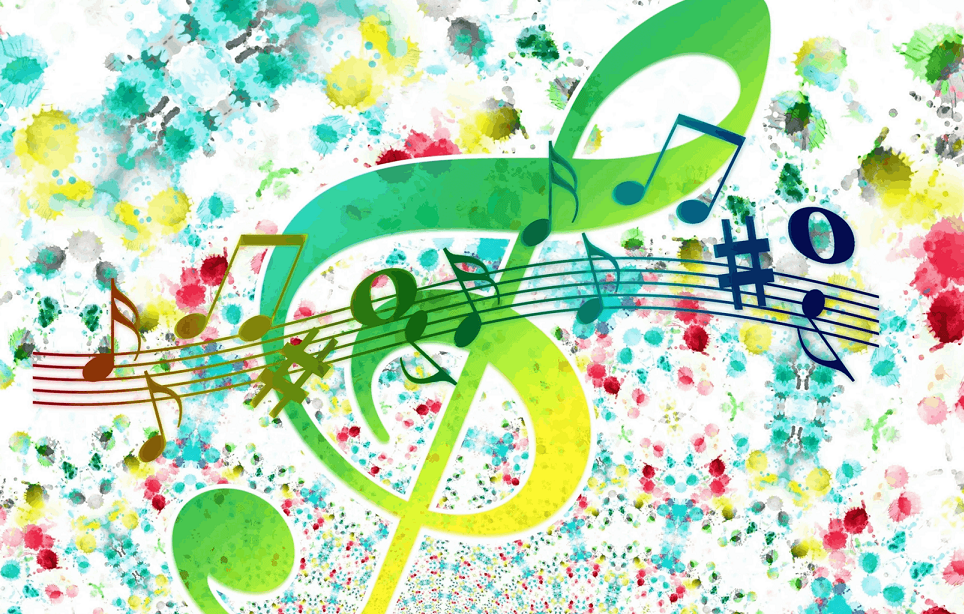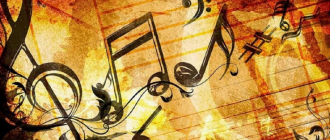What differentiates a major chord from a minor chord is only one thing: its third. Let’s remember that a chord is formed by a triad, that is, 3 consecutive notes played at the same time.
The third is the note that gives character to the chord, either minor or major. On the one hand, the major third gives a bright character to the major chord and the minor third a darker and more muted tone. Obviously all this is subjective but it serves as a reference for us to identify this interval.
Let’s break it down a bit to understand it better:
Formation of triads on the staff
Now let’s start with the C major scale to understand the difference between both chords:

A major or minor chord is formed by a root, a third and a fifth:

The fundamental can also be another note different from the scale. For example:

Or for example:

If you notice, the pattern to form these triad chords is very simple:
- You choose a keynote
- If the first note is on a space, the next note should be placed on a space. On the other hand, if the first note is on a line, the next note should be placed on a line.
Now let’s put the notes we have marked in red, one on top of the other and we will have 3 different chords:

We can also do the same with all the notes of the C major scale:

How do we now know that a chord is major or minor?
Now we know that chords are formed in the same way.
Now we have to differentiate them by remembering this:
- Within a major scale the 1st, 4th and 5th degrees of the scale are major.
- The 2nd, 3rd and 6th are minor (the 7th is diminished, but ignore it for the moment).
Let us now see how they are classified on the staff:

This pattern is fulfilled in all the 12 existing tonalities, that is to say:
Major – minor – minor – major – major – major – minor – minor – decreased
For the moment we will work only with the key of C major, which is the one in the example.
Can I convert a major chord into a minor chord and vice versa?
Yes, with accidentals: The sharp (#) and the flat (b). An accidental is a sign that modifies the pitch of the note. The sharp raises the sound one semitone and the flat lowers the sound one semitone. Let’s see an example.
These three chords that we had as an example are not altered:

What we know about them is that the first one is major and the second and third are minor. We are now going to convert the first chord we have to minor and the other two to major as an exercise.
Let’s start with the first one:
If the first chord is major, its distance from C to E (from the fundamental to the third) is a major third. Therefore we have to convert that third to a minor third.
Now let’s remember: The sharp raises the sound one semitone and the flat lowers the sound one semitone. Since it is major we have to lower it to make it minor.

We are now going to convert the minor to major. To do this we will have to use the other symbol which is the sharp.

And now let’s do the same with the E minor chord. Let’s see how it becomes E major:

Summarizing:
- Major and minor chords are differentiated by their function within the degrees of a scale, in our example we have seen that in the scale of C major there are 3 major chords, 3 minor chords and 1 diminished chord.
- Also can be major or minor by altering its third with a sharp or a flat.
If you have any questions, comment below!






